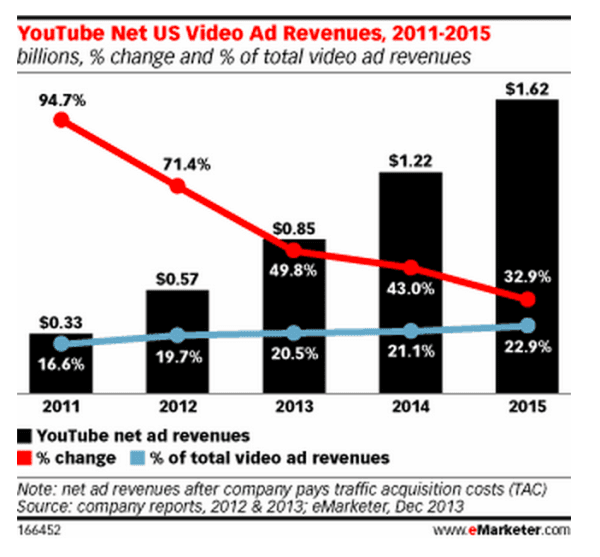
Complete Guide on Youtube Ad Revenue
Summary
Monetizing content through ad revenue on YouTube is a dynamic and intricate process that involves several key components, including content type, ad formats, and adherence to platform policies. As one of the leading video-sharing platforms globally, YouTube offers creators the opportunity to generate income through its YouTube Partner Program (YPP), which facilitates ad revenue sharing for eligible channels. This monetization avenue has become increasingly popular among creators seeking to turn their passion for content creation into a viable source of income. However, the process is nuanced and requires a deep understanding of various factors influencing revenue potential.
To begin earning ad revenue, creators must first meet specific eligibility criteria set by YouTube, such as achieving a minimum number of subscribers and watch hours. Once part of the YPP, creators can leverage a variety of ad formats, including skippable and non-skippable ads, bumper ads, and display ads, to engage audiences and optimize earnings. The strategic selection and integration of these ad types are crucial, as different formats cater to diverse marketing objectives and audience preferences, significantly impacting revenue generation.
The YouTube algorithm plays a critical role in ad placement and frequency, which are determined by engagement metrics like click-through rates and audience demographics. Creators must navigate these algorithmic intricacies to ensure their content is monetized effectively while maintaining viewer engagement and satisfaction. Additionally, understanding the nuances of Cost Per Mille (CPM) rates and ad metrics is essential for creators looking to maximize their ad revenue. CPM rates can vary based on content type, audience location, and video length, highlighting the importance of tailored content strategies.
Despite the lucrative potential of ad revenue, creators face challenges such as stringent policy compliance, income volatility, and the ethical considerations of maintaining content authenticity. Navigating these obstacles requires a balance between monetization efforts and preserving content quality and credibility. As the platform evolves, creators must remain adaptable to policy changes and emerging trends to sustain and grow their revenue streams.
Overview
Getting ad revenue on YouTube involves a complex interplay of various factors, including content type, ad formats, and monetization policies. One of the primary components affecting ad revenue is the type of content creators produce, which influences the cost per mille (CPM) or the cost per 1,000 impressions on their videos[1]. Different content types can lead to varied CPM rates, impacting the overall earnings from advertisements.
YouTube offers a diverse range of ad formats, such as Skippable Ads, Bumper Ads, Overlay Ads, and Discovery Ads, each contributing uniquely to monetization strategies[2][3]. Understanding these formats and strategically using them to guide viewers through the conversion funnel is crucial for optimizing revenue[4]. The algorithm plays a significant role in ad placement and frequency, determining where and when ads are shown based on engagement metrics like click-through rates[5].
To earn revenue through ads and YouTube Premium, creators must be part of the YouTube Partner Program (YPP), which has recently evolved to include new monetization opportunities like ad revenue sharing for Shorts[6][7]. Creators must comply with monetization policies and guidelines to ensure their videos are eligible for ad placement, and only channels meeting these eligibility thresholds can participate in the program[8][9].
By leveraging these elements content type, ad format understanding, and compliance with YPP terms creators can maximize their ad revenue on the platform.
Eligibility Requirements
To participate in the YouTube Partner Program (YPP) and begin earning ad revenue, creators must meet specific eligibility requirements. As of 2023, the core criteria involve a minimum of 500 subscribers and at least 3,000 valid public watch hours within the past 12 months[10][11]. These thresholds were adjusted in June 2023 for creators in the U.S., U.K., Canada, Taiwan, and South Korea, reflecting a decrease from previous requirements[12][11]. Additionally, creators must adhere to all YouTube channel monetization policies to qualify for the program[9].
Meeting these criteria is crucial for accessing YPP's benefits, which include monetization through ads, fan funding options such as Super Chats and channel memberships, and access to YouTube's support resources[13][14]. Creators should ensure that their content complies with YouTube's policies and guidelines before applying, as non-compliance may delay the application process[15].
Types of Ads on YouTube
YouTube offers a diverse range of ad formats that content creators can leverage to generate revenue. These formats are designed to meet various marketing objectives and cater to different audience preferences, enhancing both brand awareness and viewer engagement[16][17].
Bumper Ads
Bumper Ads are the shortest form of non-skippable ads on YouTube, lasting only six seconds[18]. Despite their brevity, they deliver a strong and memorable message or call-to-action, making them effective for brand promotion[19][18]. The trend toward short-form content has increased the popularity of bumper ads in 2023[20].
Non-Video Ads
For creators who may not have the resources for video production, YouTube provides non-video ad options. These include Display Ads and Overlay Ads. Display Ads are banner ads that appear on the right-hand sidebar, incorporating an image, text, and a call-to-action link to the advertiser's website[21]. However, starting April 6, 2023, Overlay Ads, which are legacy formats that appeared only on desktop, were discontinued to improve viewer experience and optimize ad performance across devices[22].
In-Feed Video Ads
In-Feed Video Ads appear alongside YouTube search results or on the homepage feed, resembling Google search ads. They are designed to capture viewers' attention in a non-intrusive manner, effectively positioning YouTube as a search engine for discovering video content[23].
Skippable In-Stream Video Ads
Skippable In-Stream Ads play before, during, or after a video. Viewers have the option to skip the ad after five seconds. Advertisers are charged only when a viewer watches at least 30 seconds, interacts with the ad, or completes it if it s shorter[17][24]. These ads are ideal for longer videos, providing flexibility for viewers and multiple engagement touchpoints for advertisers[24].
Non-Skippable In-Stream Video Ads
Non-Skippable In-Stream Ads require viewers to watch the full ad, which can last between 15 to 20 seconds[25]. These ads appear on YouTube and sites running Google video partners, charging advertisers based on impressions[25]. While they can disrupt shorter videos, they guarantee views, offering a higher revenue potential for creators[24].
Masthead Ads
Masthead Ads are prominent placements that can significantly boost brand visibility. They appear at the top of the YouTube homepage, offering a large-scale audience reach. These ads are suited for advertisers aiming for widespread awareness and brand recall[16][26].
By strategically selecting and integrating these various ad types, content creators can maximize their revenue potential while maintaining a positive viewer experience[27][24].
Setting Up for Ad Revenue
To begin earning ad revenue on YouTube, content creators must first meet specific eligibility requirements and follow a series of steps to set up their accounts properly. The primary method for generating ad revenue on YouTube is through the YouTube Partner Program (YPP), which allows creators to share in the ad revenue generated from ads displayed on their videos[28][5].
Eligibility Requirements
The first step towards setting up for ad revenue is confirming eligibility for the YouTube Partner Program. Creators need to ensure their channel meets the program's eligibility criteria, which include a minimum number of subscribers and public watch hours. Typically, a channel requires at least 500 subscribers and a specified amount of public watch time to be eligible[29][9]. Additionally, creators must adhere to YouTube's channel monetization policies and guidelines, which are designed to maintain a safe and friendly environment for advertisers and viewers[30][8].
Linking AdSense Account
Once eligible, creators need to link their YouTube channel to an AdSense account, which is the platform that facilitates payment for ad revenue. Creators can sign up for an AdSense account specifically for YouTube if they don't already have one. It's essential to use the same Google account associated with the YouTube channel to streamline the process[31][32]. During this step, YouTube may require verification of the creator's identity and address, usually through a PIN mailed to the creator once a specific earning threshold is reached[32].
Optimizing Content for Ad Revenue
To maximize ad revenue, creators should focus on producing high-quality, engaging content that resonates with their audience. This involves not only the content's substance but also its format and length. Videos that exceed eight minutes are preferred as they can include multiple mid-roll ads, which can significantly increase revenue potential[33][34]. Furthermore, optimizing video metadata and engaging with viewers are critical strategies for boosting visibility and interaction metrics, which influence ad placements[35][36].
By fulfilling these setup requirements and optimizing their content, YouTube creators can effectively tap into the platform's ad revenue potential, providing them with a viable income stream as they grow their channels[34][37].
Monetization Strategies
Monetizing content on YouTube involves a variety of strategies that creators can employ to maximize their ad revenue. A primary avenue is joining the YouTube Partner Program (YPP), which allows creators to earn money through ad placements on their videos[38][39]. To qualify for the YPP, creators must meet specific eligibility criteria, including a minimum number of subscribers and watch hours[40]. Once accepted into the program, creators gain access to a range of monetization features, such as Super Thanks, Super Chat, Super Stickers, and channel memberships[40].
To enhance ad revenue, creators should focus on optimizing their video content and ad placements. This includes understanding and improving Cost Per Mille (CPM) rates, strategically placing ads in videos, and leveraging YouTube Analytics to track performance[36][41]. Creators are encouraged to produce evergreen and thematic content, which can sustain viewer interest over time and lead to consistent ad revenue[41].
Diversifying ad formats can also increase earnings. Creators are advised to utilize various ad types, such as skippable and non-skippable video ads, bumper ads, and display ads, to engage different viewer segments[42][43]. Employing vertical video ads can enhance engagement, particularly among audiences consuming content on mobile devices[42].
Furthermore, maintaining a large subscriber base can unlock additional monetization options, such as YouTube Premium revenue, which allows creators to earn from subscribers who watch their content without ads[39]. It is important for creators to keep in mind that while ad revenue is significant, diversifying income streams beyond ads such as through merchandise sales or sponsored content can provide financial stability[39]. Understanding audience demographics and creating targeted content can significantly boost engagement and ad revenue, making it a critical aspect of a successful monetization strategy[44][45].
Ad Revenue Calculation and Metrics
Ad revenue on YouTube is primarily determined by several key factors, including the number of ad impressions, CPM (Cost Per Mille), and viewer engagement with ads[46]. The formula used to calculate YouTube revenue is (Total Views * CPM) / 1000, which provides an estimate of earnings from ad impressions[47]. CPM represents the amount advertisers pay for 1,000 ad impressions on YouTube, and it varies depending on several factors, such as location and video length[48].
Creators typically earn a portion of the ad revenue generated from their videos, with YouTube retaining the rest. This revenue-sharing model usually grants creators about 55% of the total ad revenue[46][39]. Understanding and optimizing CPM rates is crucial, as higher CPMs, which can range from $20 to $35, can significantly boost earnings[41]. The type of content produced also influences CPM, as it impacts the number of views and engagement levels[1].
Different ad formats on YouTube have unique characteristics and can impact earnings in various ways. Creators can optimize their monetization strategies by understanding these formats and choosing the most effective placements for their content[3]. Additionally, factors like Click-Through Rates (CTR) can further influence YouTube revenue, making it important for creators to monitor and adjust their strategies based on audience engagement[49][50].
Factors Influencing Ad Revenue
Ad revenue on YouTube is influenced by various factors, each playing a crucial role in determining the income generated by content creators. Understanding these factors can help creators optimize their monetization strategies and maximize earnings.
Ad Formats and Placement
Different ad formats have distinct characteristics and impacts on earnings. The main ad formats on YouTube include skippable ads, non-skippable ads, bumper ads, and display ads, among others. Each format offers different placement options and viewer interactions, affecting the potential revenue creators can earn from them. Understanding and utilizing the appropriate ad formats can significantly optimize monetization strategies [3].
The YouTube algorithm plays a vital role in ad placement and frequency within videos. Creators with higher engagement metrics, such as a high click-through rate (CTR), are more likely to have ads placed in their content, enhancing their potential earnings [5]. However, increased ad frequency and duration can sometimes negatively impact video views and engagement, which could ultimately affect a creator's revenue [51].
Audience Demographics and Targeting
Audience demographics are pivotal in influencing YouTube ad revenue. Advertisers often pay a premium to target specific demographics or regions, which means creators who understand and cater to their audience's characteristics can see an increase in ad earnings [52][44]. Knowing your audience demographics can not only enhance targeting efforts but also improve ad reach and performance [49].
Content Type and Engagement
The type of content created by YouTubers significantly impacts ad revenue. Content types influence the videos' CPM (cost per mille), which is the cost per 1,000 impressions. Different genres and niches attract varying CPM rates, affecting the revenue generated per view [1]. High engagement, indicated by factors like a high CTR, can boost a creator's revenue, making engagement metrics crucial in monetization strategies [49].
Seasonality and Trends
Seasonal variations and trends also play a critical role in shaping ad revenue. Ad rates and demand often fluctuate throughout the year, impacting creators' earnings. Creators who can anticipate and capitalize on these seasonal trends may experience enhanced ad revenue during peak times [52].
Ad Networks and YouTube's Ecosystem
Ad networks are integral to the YouTube ad ecosystem, acting as intermediaries between advertisers and the platform. They manage ad placement, targeting, and billing, significantly impacting how ad revenue is distributed and generated [53]. Understanding the dynamics of these networks can help creators navigate and potentially optimize their revenue streams within YouTube's complex advertising ecosystem.
By considering these factors and adapting strategies accordingly, YouTube creators can effectively influence their ad revenue, ensuring better financial returns from their content.
Challenges and Considerations
While the opportunity to earn ad revenue on YouTube is appealing, creators face several challenges and considerations that must be addressed to optimize their earnings and maintain their channel's reputation. One of the primary challenges is navigating the stringent eligibility requirements set by the YouTube Partner Program (YPP), which necessitate compliance with YouTube's monetization policies and advertiser-friendly content guidelines[38][54][8]. This ensures that only high-quality content from trusted creators is monetized, safeguarding the platform from spammers and impersonators[8].
Income uncertainty is another significant consideration for creators, as ad revenue can be inconsistent and influenced by various factors, such as video views, engagement rates, and ad formats used[38][51]. Creators must be strategic in selecting ad formats that align with their content and target audience, as these choices can significantly impact both revenue and viewer experience[3][24]. For instance, while non-skippable ads offer higher revenue potential due to guaranteed views, they may disrupt the viewer experience, especially in shorter videos[24]. On the other hand, skippable ads provide a more viewer-friendly option but require specific viewer interactions to generate revenue[24].
Additionally, the increased frequency and duration of ads can lead to a decline in video views and audience engagement, further affecting revenue potential[51]. To counteract this, creators can employ strategies such as A/B testing different ad variations and optimizing ad placement to maximize revenue generation[55].
Moreover, the reliance on ad revenue may drive creators to adopt clickbait titles and thumbnails, which can harm their credibility and reputation[51]. As such, creators need to balance monetization strategies with maintaining the integrity and quality of their content to foster long-term success on the platform.
Legal and Ethical Considerations
When participating in the YouTube Partner Program and aiming to earn ad revenue, creators must navigate a landscape of legal and ethical considerations that can significantly impact their success and reputation.
Compliance with YouTube Policies
To be eligible for monetization, creators are required to adhere strictly to YouTube's channel monetization policies. This includes compliance with Advertiser-Friendly Content Guidelines, which stipulate the type of content suitable for ads. Videos that fail to meet these guidelines may have limited or no advertisements, affecting potential revenue[9][8]. Channels must also be in good standing, ensuring they have not violated community guidelines or monetization policies[56][9].
Content Authenticity and Credibility
The pursuit of ad revenue can sometimes lead creators to adopt clickbait tactics, such as misleading titles and thumbnails, to increase views. However, such practices can harm a creator's credibility and reputation over time[51]. Maintaining content authenticity is crucial, as it fosters viewer trust and long-term channel growth.
Monetization Ethics
The ethical aspect of content monetization involves transparency with the audience about sponsored content and advertisements. Creators promoting products, whether their own or from other brands, must ensure clear communication to avoid misleading their viewers[56]. Additionally, creators are encouraged to engage with their audience genuinely rather than solely focusing on revenue generation.
Copyright and Fair Use
Creators must be cautious about using copyrighted materials in their videos. Only content that complies with copyright laws and has appropriate permissions can be monetized. For instance, if a video includes copyrighted content, the creator may need to ensure that the content's match policy allows for monetization[57]. Understanding and respecting copyright and fair use laws are vital to avoiding potential legal issues.
Engaging with the Community
Creators who remain active and engaged with their community are more likely to succeed in the YouTube Partner Program. Channels that do not upload content or interact with the community for extended periods may face deactivation of monetization features[15]. Therefore, consistent engagement is not only ethical but also a practical strategy for sustaining ad revenue.
Case Studies and Examples
The dynamics of ad revenue generation on YouTube have been exemplified through various case studies that illustrate both success and challenges faced by content creators. One notable example is the experience of creators who strategically enhance their AdSense earnings by focusing on key strategies such as understanding and improving CPM rates, optimizing manual ad placements, leveraging YouTube Analytics, and creating evergreen and thematic content[41]. These tactics not only help in maximizing revenue but also in maintaining viewer engagement by ensuring that content remains relevant over time.
In the competitive YouTube environment, creators have employed a mix of ad types, tailored to the different stages of the buyer's journey, to boost engagement and ad click-through rates (CTR). This holistic approach includes using In-Stream and Discovery ads to create awareness and Bumper and Overlay ads to drive further engagement[4][45]. By doing so, creators effectively guide potential customers through the conversion funnel, thus optimizing their revenue potential.
However, not all strategies lead to positive outcomes. The increased frequency and duration of ads can sometimes result in decreased video views and viewer engagement, negatively impacting revenue. This has also led some creators to adopt clickbait titles and thumbnails in an effort to maintain viewership, which can be detrimental to their credibility and reputation in the long term[51].
These examples underscore the dual-edged nature of monetization through YouTube's Partner Program. While creators can significantly profit from their content through shared ad revenue with YouTube, they must navigate challenges such as stringent eligibility requirements, income uncertainty, and content regulation to achieve success[38][58].
Future of Ad Revenue on YouTube
The future of ad revenue on YouTube presents both promising opportunities and potential challenges for creators and advertisers alike. With YouTube's exponential growth in ad revenue over the years, as exemplified by the platform generating over $15 billion in 2020 alone, the trajectory appears robust and expansive[53]. However, as YouTube continues to evolve, several factors will play pivotal roles in shaping its ad revenue landscape.
Policy Changes and Revenue Fluctuation
YouTube's ad revenue has historically fluctuated due to major policy changes instituted by Google[59]. These policies can significantly impact how revenue is generated and shared between creators and the platform. As YouTube adapts its advertising strategies and policies, creators may face income uncertainty and must stay informed to adjust their content strategies accordingly[38].
Impact of Ad Formats and Placement
Ad format and placement remain crucial in determining the future of ad revenue on YouTube. Recently, YouTube has streamlined ad format choices to improve creator revenue, offering viewers pre-roll, post-roll, skippable, and non-skippable ads for long-form videos[60]. As the platform continues to optimize these formats, creators and advertisers may experience changes in viewer engagement and ad performance.
Viewer Engagement and Content Strategy
The increased frequency and duration of ads have led to concerns about reduced video views and engagement, which can affect creators' ad revenue[51]. To mitigate these issues, content creators are encouraged to develop strategies that enhance viewer engagement while maintaining the credibility and reputation of their content[51][41]. This involves crafting relevant video content and leveraging YouTube's algorithm for better ad placement and higher CPM rates[61][41].
The Role of Ad Networks
Ad networks are pivotal in YouTube's ad ecosystem, acting as intermediaries between advertisers and the platform. These networks handle ad placement, targeting, and billing, which can influence the future revenue landscape on YouTube[53]. As these networks continue to refine their processes, the efficiency and profitability of ad campaigns on the platform are likely to improve.
Resources and Support
The YouTube Partner Program (YPP) provides creators with valuable resources and support to enhance their monetization efforts and grow their channels. Upon joining YPP, creators gain access to an array of monetization features and greater reach, which includes revenue sharing from ads displayed on their content[38][62]. Additionally, members of the program benefit from access to YouTube's Creator Support teams, who offer guidance and assistance tailored to creators' needs[62].
For creators seeking to maximize their ad revenue, it is essential to understand the resources available to them. YouTube provides tools and guidelines, such as the Advertiser-Friendly Content Guidelines, to help creators ensure their videos are eligible for ad placement[8]. These resources are crucial for maintaining compliance and optimizing ad opportunities, as only channels that adhere to all guidelines and meet eligibility thresholds can fully participate in monetization efforts[8].
Furthermore, creators are encouraged to leverage various monetization methods, such as paid chat, tipping, channel memberships, and shopping features, to diversify their income streams[63]. These options are particularly beneficial for smaller creators, as they allow monetization even when traditional ad revenue sharing is not yet possible[63].
In addition to these features, creators can increase their revenue by producing content that supports multiple mid-roll ads. Videos exceeding eight minutes in length have a higher likelihood of incorporating these ads, thereby boosting earnings potential[33]. However, creators must balance ad frequency with audience engagement, as excessive ads can negatively impact video views and creator credibility[51].


